
HR teams are facing a growing challenge in making decisions that are both people-focused and business-driven. Balancing retention, talent acquisition, and workforce planning often feels like working with incomplete information.
It is no surprise that 69% of companies are now building people analytics databases to bring clarity to these decisions. Predictive analytics takes this one step further, helping HR managers anticipate outcomes, reduce risks, and design strategies that truly support organizational growth.
In this guide, we will explore what predictive analytics is, how it works in HR, and the value it can bring to your workforce strategies.
Predictive analytics in HR refers to the use of historical workforce data, statistical models, and machine learning techniques to forecast future trends and outcomes.
According to the Society for Human Resource Management (SHRM), it enables HR leaders to move from reactive problem-solving to proactive talent strategies by anticipating challenges such as turnover, hiring needs, and performance gaps.
Instead of relying on instinct or past trends alone, predictive analytics helps HR teams base decisions on evidence-backed projections.
Understanding the concept is just the first step. To see its true value, it is important to look at how predictive analytics actually works within HR processes.
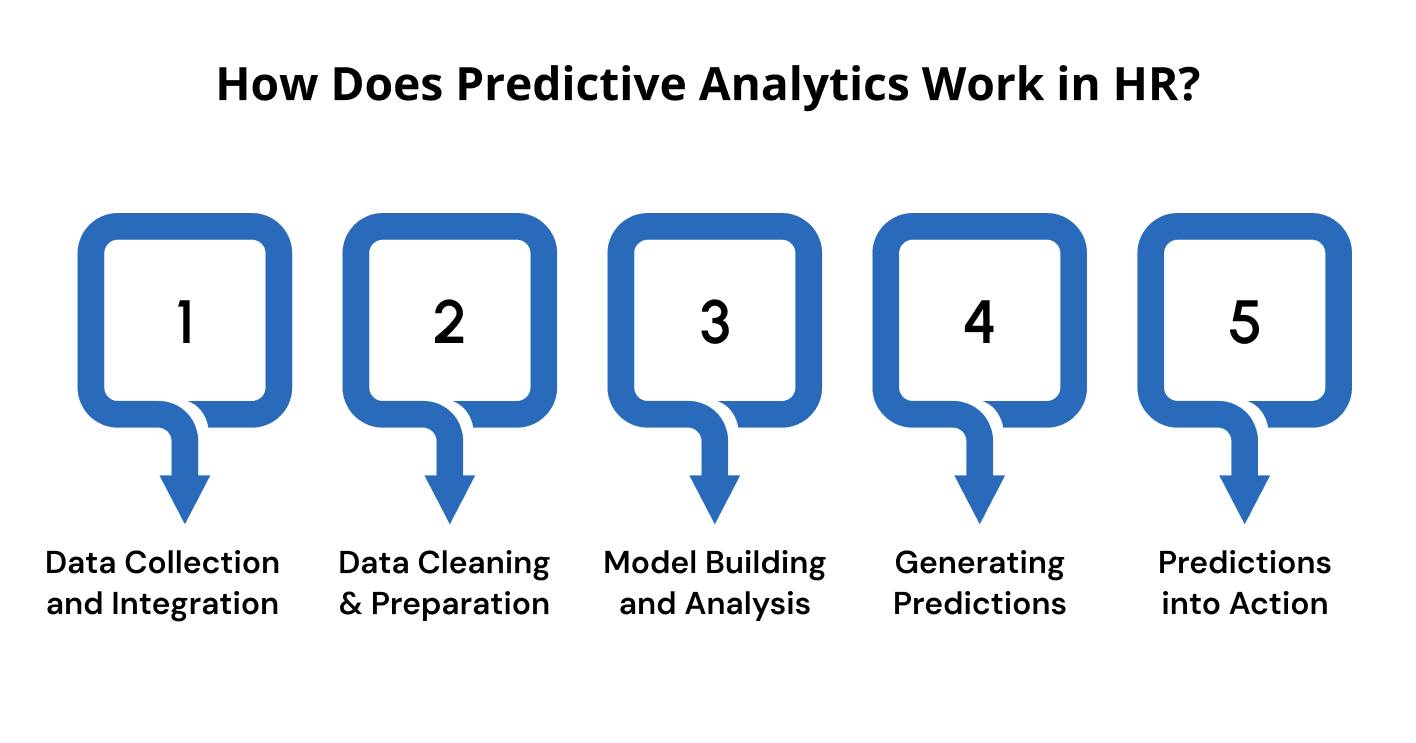
Predictive analytics in HR works by turning employee data into forward-looking insights that guide decision-making. It combines information from HR systems with statistical modeling and artificial intelligence to forecast workforce trends, helping HR leaders act before issues escalate.
The foundation of predictive analytics lies in gathering and unifying data from multiple HR sources. This includes:
Raw data often contains errors or inconsistencies that can distort predictions. Predictive analytics helps by:
Once the data is reliable, advanced models identify patterns and forecast outcomes. These are a few processes that take place during this phase:
The models convert patterns into actionable forecasts that HR teams can use. Predictive analysis can help you in:
The final step is translating insights into HR strategies and initiatives. Most organizations employ predictive analytics for:
To truly drive results, HR teams must understand the structured process behind these predictions. This leads us to the different phases of HR predictive modeling, where each stage plays a crucial role in ensuring accuracy and impact.
Suggested Read: How to Build Pay Structures: Pros and Cons of Salary Bands and Pay Ranges
Before predictive analytics can deliver meaningful insights, HR teams typically move through several phases of analysis. Each phase builds on the previous one, moving from understanding the past to shaping the future.
This layered method helps HR managers identify causes and develop practical strategies.
Descriptive analytics provides a clear picture of historical HR data by summarizing trends and outcomes. For example, it may show how many employees left in the past year, the average time to fill vacancies, or the rate of training completion. This stage helps HR managers establish benchmarks and recognize recurring patterns, forming the baseline for more advanced analysis.
HR teams often use tools like exit interviews, performance reviews, and employee surveys to identify root causes. For instance, it might reveal that a high turnover rate in one department stems from limited career growth opportunities.
Predictive analytics uses statistical models and AI-driven algorithms to forecast potential future outcomes. For example, it can estimate which employees are most at risk of leaving, predict the effectiveness of a training program, or anticipate skill gaps in the coming years.
Prescriptive analytics takes predictions one step further by recommending concrete actions to achieve desired outcomes. For instance, if predictive models indicate a risk of attrition among high-performing employees, prescriptive analytics might suggest targeted retention incentives or mentorship programs.
With this framework in place, HR managers can better understand what is happening and how to act on it. This leads us into the broader discussion of the role predictive analytics plays in HR today.
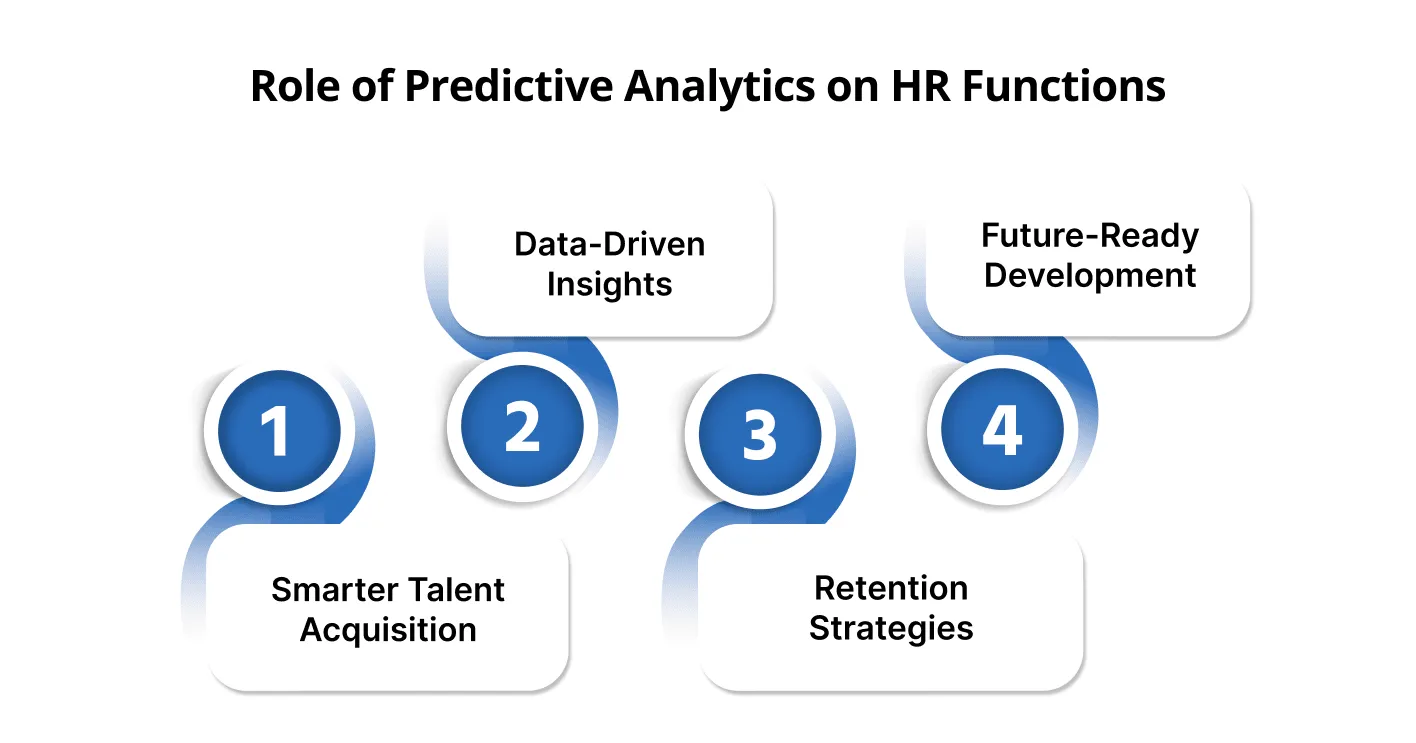
Predictive analytics is reshaping how HR teams approach recruitment, performance, retention, and employee development. By using data-driven insights, HR managers can reduce uncertainty and create strategies that directly improve workforce stability and growth.
Predictive models help organizations identify candidates who are qualified and also likely to thrive in the company culture. By analyzing data from past hires and performance trends, HR teams can make better hiring decisions, shorten time-to-fill, and improve long-term employee fit.
Instead of relying solely on annual reviews, predictive analytics allows managers to anticipate performance trends throughout the year. This proactive approach helps spot potential high performers, identify employees in need of support, and align training initiatives with individual growth paths.
One of the most impactful uses of predictive analytics is in preventing turnover. By tracking factors such as engagement levels, compensation trends, and workload patterns, HR can detect early warning signs of attrition and design interventions that keep valuable employees engaged.
Predictive analytics also supports workforce planning by highlighting upcoming skill gaps and training needs. This ensures that HR teams can create learning and development programs tailored to future organizational requirements, preparing employees for evolving business challenges.
Together, these applications show how predictive analytics turns HR from a reactive support function into a strategic driver of business success. With these foundations in place, we can now look at the key applications of predictive analytics in HR in greater detail.
Suggested Read: Understanding Pay Transparency Laws in Different States - 2025 Guide
Predictive analytics goes beyond broad strategies, offering specific, actionable applications that HR managers can implement across their organizations. HR teams can design policies and initiatives that directly improve employee satisfaction, productivity, and long-term retention.
Anticipating future staffing needs based on business growth, retirements, or market shifts. For instance, a retail chain can use predictive models to forecast seasonal hiring needs. This ensures they have enough staff during holiday peaks without over-hiring in off-seasons.
Using data-driven insights to design fair, competitive pay structures and reduce pay inequities. For instance, a tech startup may analyze market salary trends to adjust pay bands. This can help them stay competitive while preventing costly turnover.
Predicting how hiring and promotion trends will affect organizational diversity over time. For instance, a financial services firm cantrack promotion rates by gender and ethnicity using predictive analysis.
Identifying patterns of absenteeism that may indicate burnout or disengagement. For instance, a healthcare provider can analyze shift data to flag units with high absence rates. They can then implement targeted wellness programs to reduce burnout.
Forecasting leadership needs and preparing high-potential employees for future roles. For instance, a manufacturing company can use predictive analytics to identify employees with strong performance and leadership traits.
These applications illustrate how predictive analytics supports both immediate workforce stability and long-term organizational goals. To better understand its impact, let us now look at real-world examples of predictive analytics in action within HR.
Predictive analytics has moved well beyond theory and is now a core part of how leading companies manage their workforce. The following real-world examples show how predictive people analytics has made tangible differences in recruitment, retention, performance, and engagement.
Xerox analyzed data from over 48,700 call center hires, discovering that personality traits, such as curiosity and inquisitiveness, were stronger predictors of retention than work experience. By adjusting their hiring process to emphasize these traits, attrition dropped by 20% within six months
Hewlett‑Packard developed a predictive attrition model, commonly referred to as a “flight risk” score by analyzing variables like performance, engagement, promotion history, and workplace satisfaction. This model allowed proactive retention strategies, halving turnover rates in high-risk employee segments and yielding significant cost savings (est. $300 million).
Google’s analysis of its extensive interview data revealed that just four interview rounds were sufficient to predict candidate suitability with 86% accuracy. This is far earlier than the previous process of up to 25 interviews. This insight reduced their median time to hire from around 180 days to just 47 days, enhancing both efficiency and candidate experience.
These real-life cases demonstrate the wide-ranging impact of predictive people analytics. To harness them effectively, the next step is understanding the key stages of implementing predictive analytics in your organization.
Suggested Read: What is Merit Pay And How Does It Impact Salary Increases?
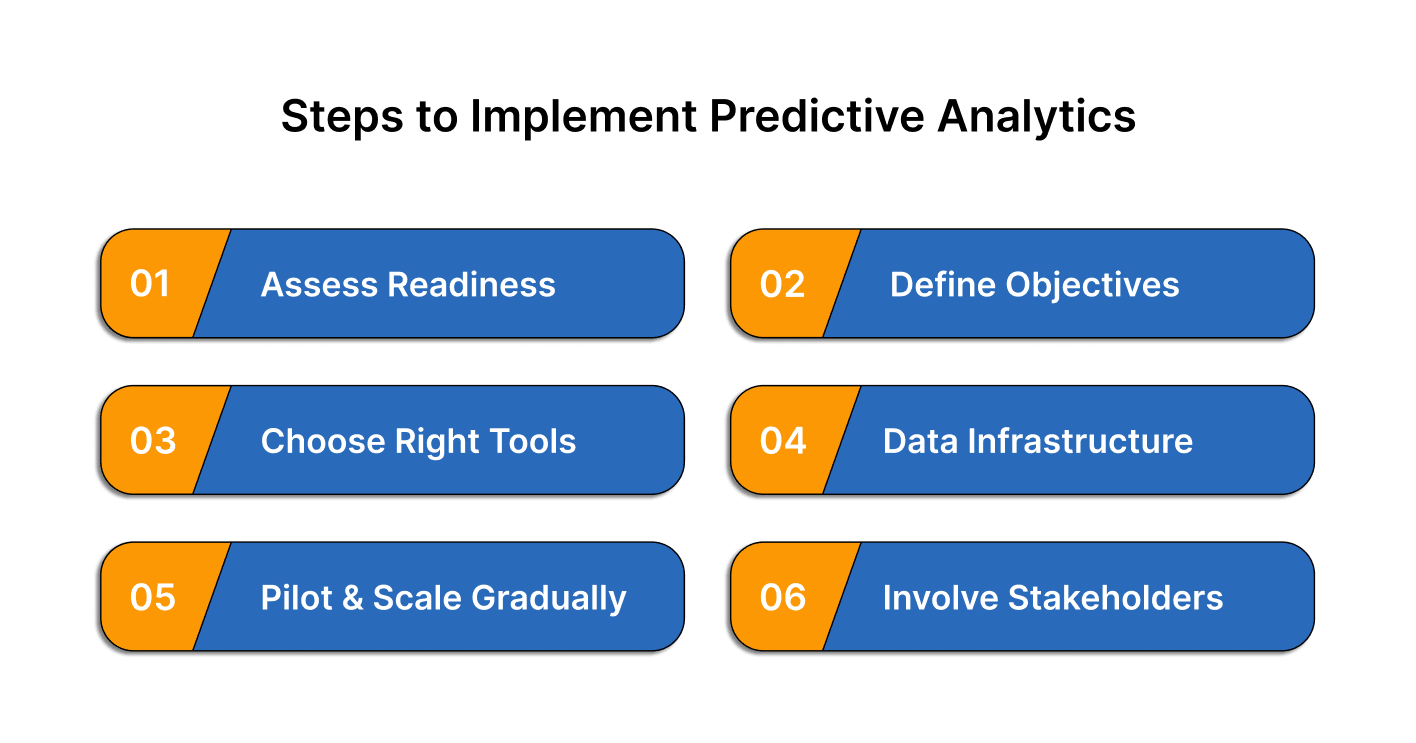
Adopting predictive analytics in HR demands a structured approach that ensures accuracy, trust, and long-term impact. By following a step-by-step process, HR leaders can move from exploration to execution with confidence.
When implemented thoughtfully, predictive analytics becomes a core part of strategic HR decision-making. Data can help HR leaders make strategic decisions with measurable outcomes. This is better explained in the following section.
Predictive analytics offers HR leaders advantages that go beyond daily workforce management. When applied strategically, it strengthens the HR function’s influence at the leadership table and builds long-term organizational resilience.
When combined with enterprise performance management systems, predictive HR analytics provides a comprehensive view of workforce impact on overall business performance.
Next, let us consider the key factors HR leaders must keep in mind while implementing predictive analytics to ensure it delivers lasting value.
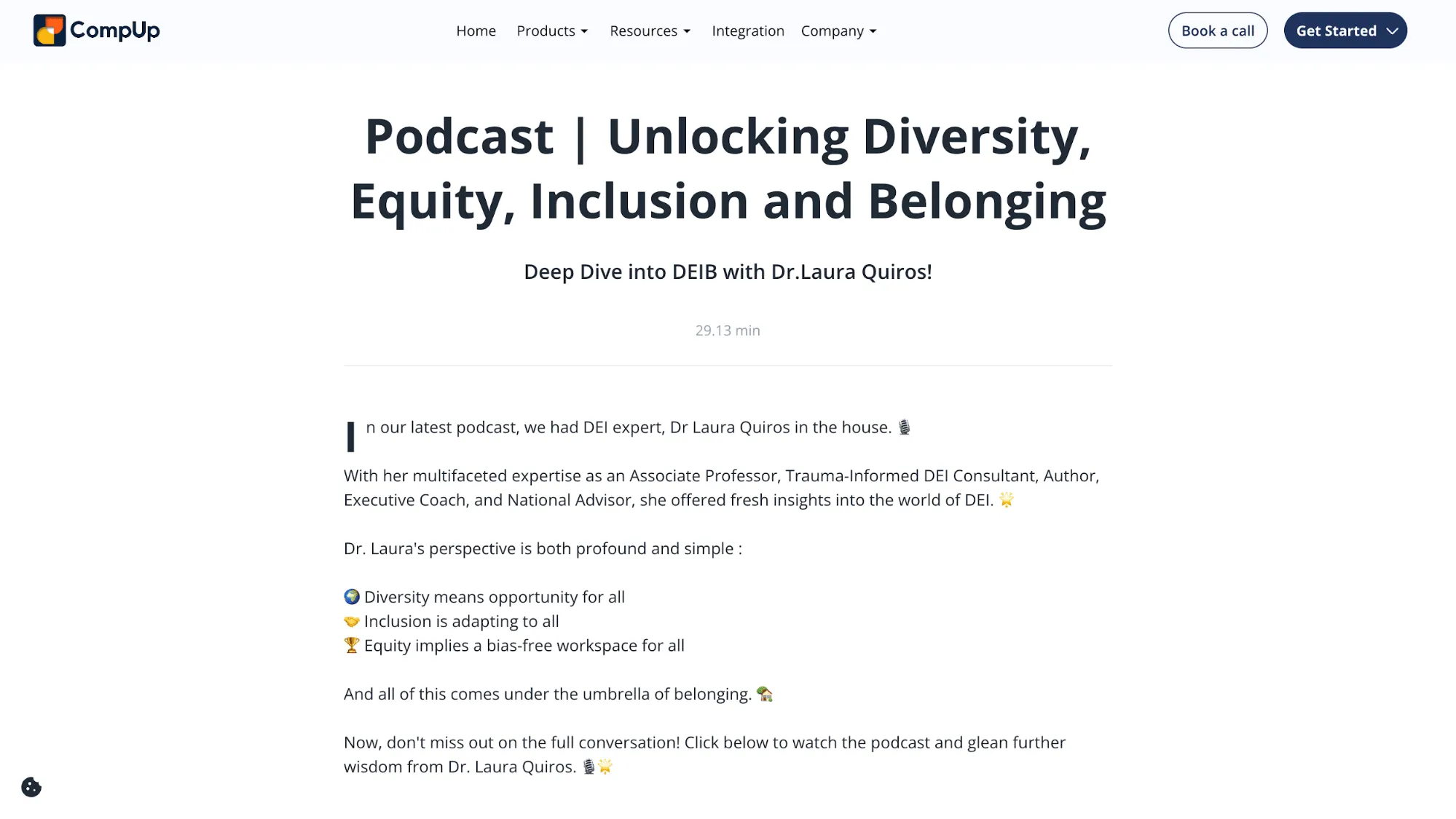
Suggested Podcast: In this episode of The Pay Equity Equation, we go deep into the challenges that prevent organizations from achieving pay equity. Join Nick Howell as we explore the key issues that often hinder progress and uncover actionable insights for closing the pay gap.
While predictive analytics offers immense potential, its success depends on careful planning and responsible execution. HR leaders must be mindful of both the opportunities and the challenges that come with adopting such data-driven practices.
Choosing the right platform can help address many of these challenges. By aligning predictive insights with actionable HR practices, CompUp makes it easier for HR leaders to implement analytics responsibly and effectively.
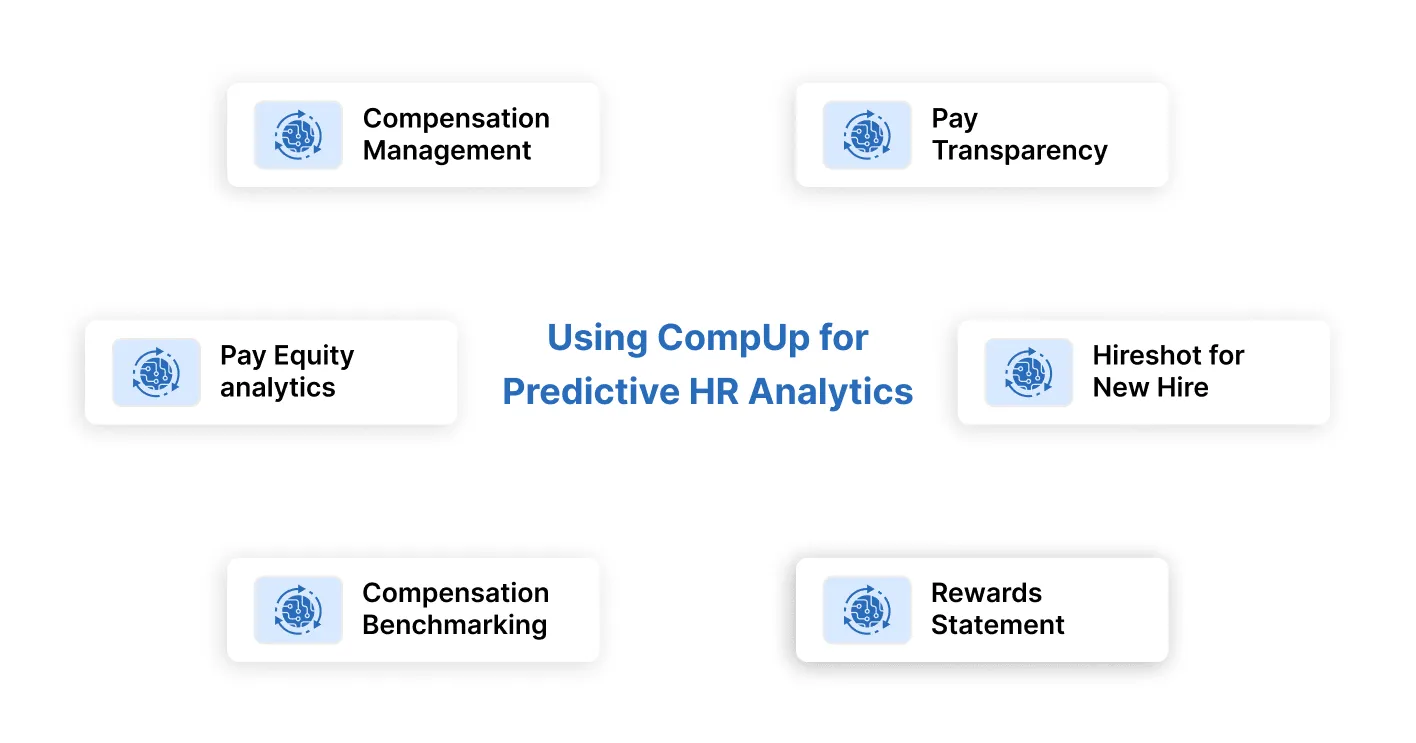
CompUp helps HR leaders connect compensation strategies with predictive insights, ensuring decisions are fair, transparent, and future-ready. Its six core capabilities work together to improve HR processes while proactively addressing workforce challenges.
CompUp simplifies increments, promotions, and adjustments with a unified compensation management system. Features like Compensation Bands provide a clear view of pay ranges, while Budget Simulation uses forecasting to plan reward allocations. Manager Execution supports unbiased pay decisions, aligning with organizational strategy.
Clear communication around compensation builds trust and supports compliance with evolving regulations. CompUp helps organizations share pay structures openly, ensuring employees understand how their compensation is determined. Predictive insights further model the long-term impact of transparency on retention and engagement.
With CompUp, HR leaders can identify and close pay gaps across roles, demographics, and geographies. Predictive analytics flags where inequities may develop, allowing organizations to address them before they grow. This proactive approach fosters fairness and strengthens organizational credibility.
Hireshot helps HR set competitive, equitable pay for new hires with features like Digital Offer Experience and Offer Engagement. The Intelligent Offer Assistant answers candidate queries and predicts dropout risks. With Digital Onboarding, new hires transition smoothly and feel valued from the start.
CompUp delivers real-time benchmarking across industries and job levels, helping HR teams stay competitive. Predictive analysis anticipates market shifts, ensuring compensation strategies remain attractive to top talent. This minimizes turnover risk and supports long-term recruitment success.
Employees gain a clear view of their total compensation package through CompUp’s Rewards Statement feature. Personalized insights show salary, bonuses, and benefits across locations and currencies. Predictive models link these rewards to engagement, helping HR design strategies that increase satisfaction and retention.
These features help HR leaders translate predictive analytics into actionable workforce strategies. CompUp is more than a compensation tool. It is a driver of organizational growth and employee trust.
Predictive analytics is quickly becoming the cornerstone of modern HR, enabling leaders to move from reactive management to proactive strategy. Its ability to forecast talent needs, close skill gaps, and prevent attrition will only deepen, making it an essential tool for organizations that want to stay ahead in a competitive labor market.
CompUp takes this vision a step further by integrating predictive insights into practical HR solutions. Its features, such as Compensation Bands, Budget Simulation, Intelligent Offer Assistant, and Personalized Compensation, equip HR leaders to retain talent. You can also design equitable pay structures and enhance employee engagement with data-driven precision.
Ready to turn workforce data into future-ready strategies? Schedule a free demo today to make smarter, predictive decisions.
1. What is the difference between predictive and descriptive HR analytics?
Descriptive HR analytics looks at past workforce trends to explain what happened, while predictive HR analytics uses data modeling and statistical techniques to forecast future outcomes, enabling HR leaders to proactively plan and prevent challenges before they arise.
2. What is the difference between predictive and prescriptive analytics?
Predictive analytics forecasts what is likely to happen based on historical data, while prescriptive analytics goes further by recommending specific actions or strategies to achieve desired outcomes, turning predictions into actionable plans for HR decision-making.
3. How to choose the right predictive analytics tool for your organization?
Select a tool that integrates with existing HR systems, ensures data accuracy, addresses compliance and privacy, and offers user-friendly dashboards. Prioritize solutions that support your HR goals, such as retention, pay equity, or workforce planning.
4. How is predictive analytics used in HR?
Predictive analytics is used in HR to forecast turnover, identify high-potential talent, optimize compensation, improve recruitment success, and plan future skill development. It enables data-driven decisions that reduce costs and enhance employee engagement, performance, and retention.
5. What challenges can arise when implementing predictive analytics in HR?
Challenges include ensuring data quality, preventing algorithmic bias, managing privacy concerns, and gaining leadership buy-in. Without addressing these factors, predictive analytics may deliver unreliable insights or face resistance, limiting its impact on workforce strategy and decision-making.
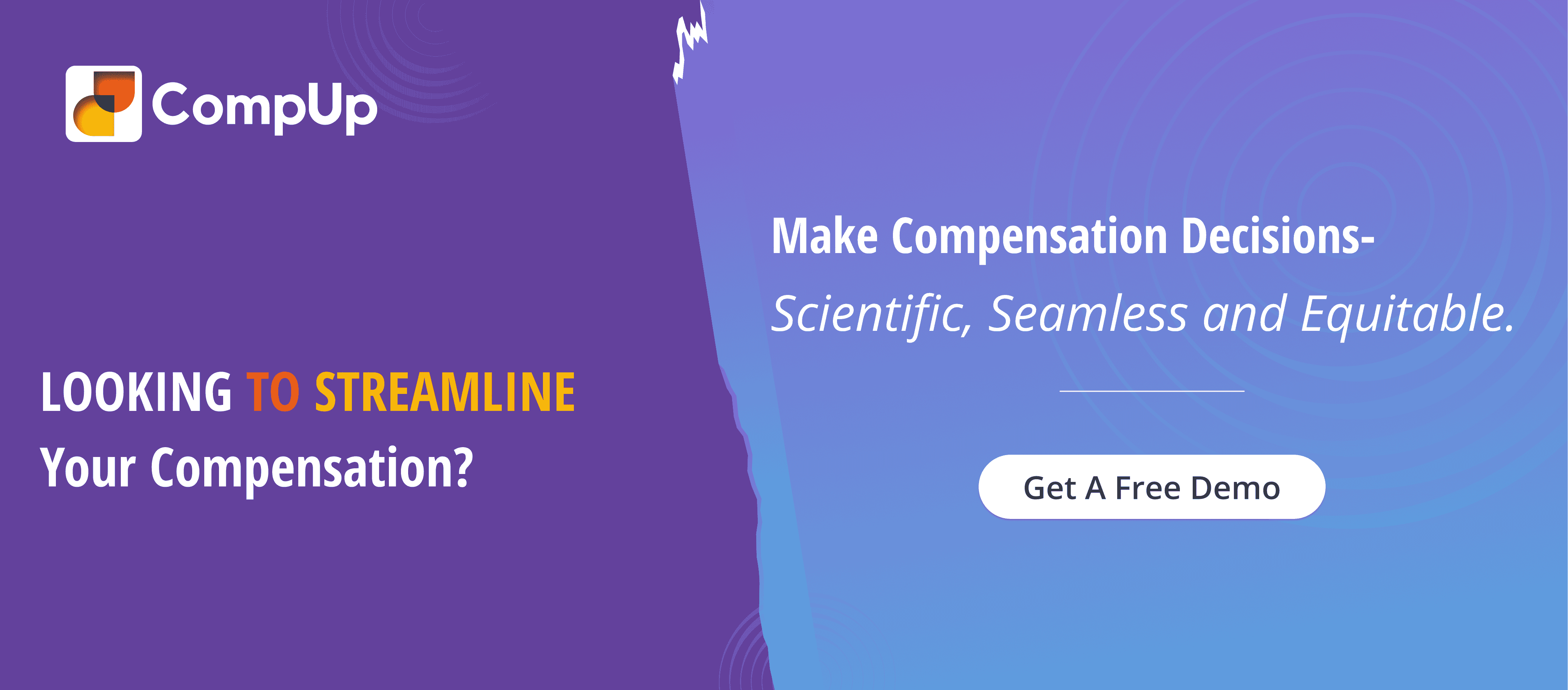
Co-founder & CEO, CompUp
Anurag Dixit, founder of CompUp, is a seasoned expert in all things compensation and total rewards. With a deep understanding of the current compensation trends, his vision is to help companies create fair, transparent, and effective compensation strategies.
Revolutionizing Pay Strategies: Don't Miss Our Latest Blogs on Compensation Benchmarking